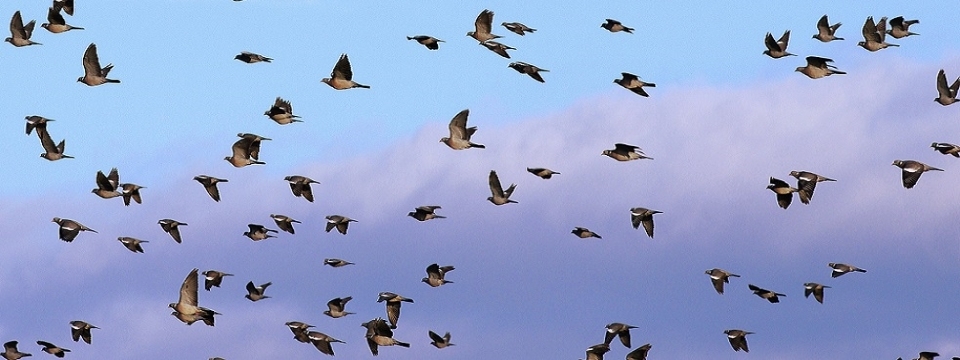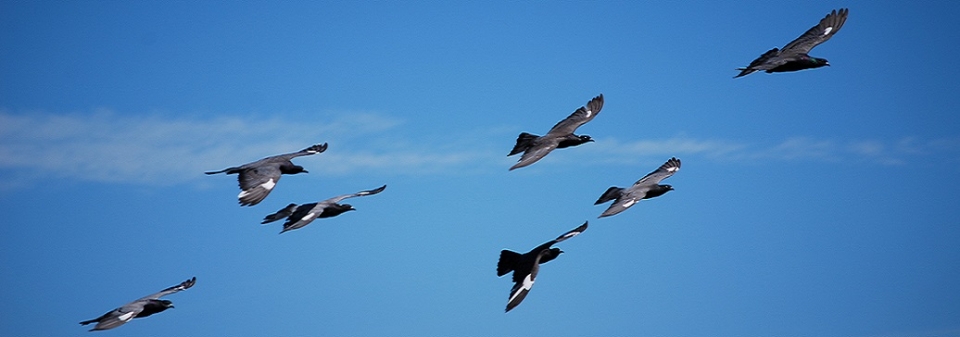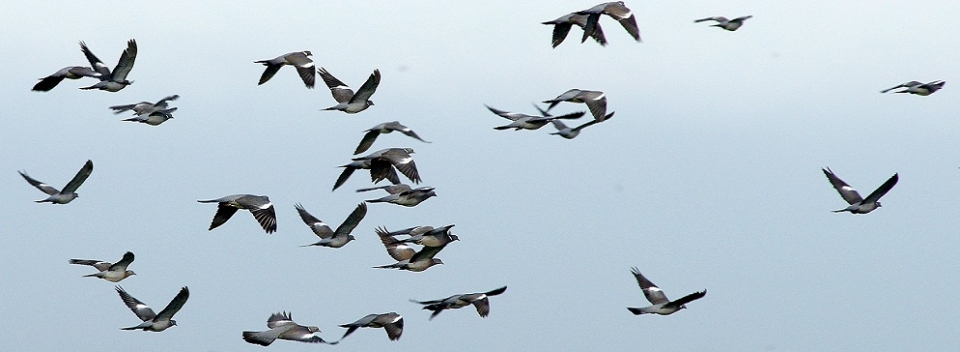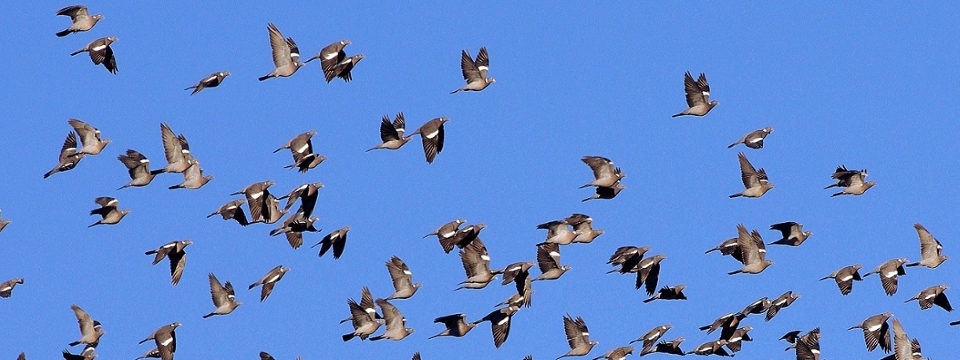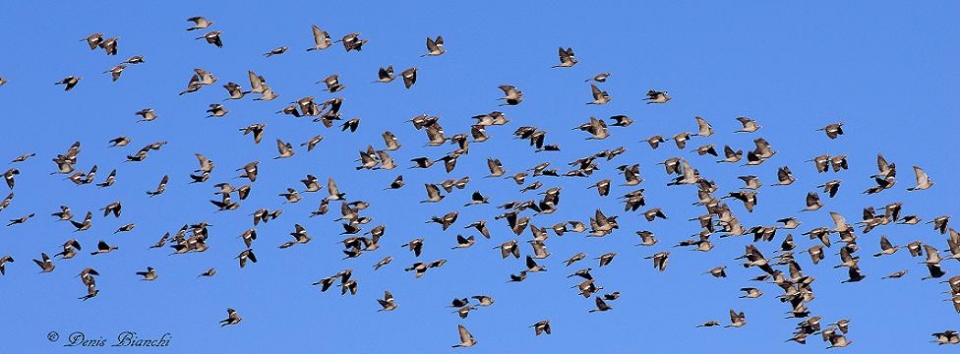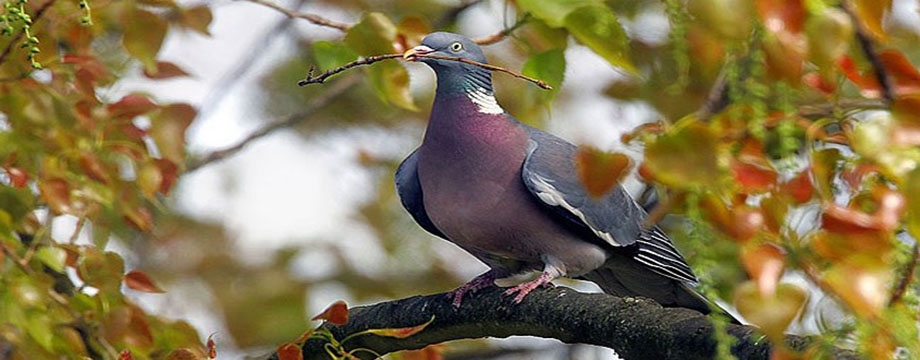Monitoraggio delle Migrazioni con i Radar ( REVIEW AGOSTO 2018 by Cornell Lab. Ornithology – USA )
NB: invitiamo caldamente ad utilizzare i Links qui inclusi
Ci è giunto ieri 10 Agosto 2018 un Aggiornamento – della Università Cornell ( Itaca-NY- USA) e più specificatamente dal Laboratorio di Ornitologia – totalmente dedicato all’utilizzo del Radar per il monitoraggio della Migrazione degli Uccelli .
Il Cornell Lab Ornithology include nei suoi studi anche
Beccaccia ( North America) https://www.allaboutbirds.org/guide/American_Woodcock/id
Colombaccio (North America) https://www.allaboutbirds.org/guide/Band-tailed_Pigeon/id
Questo aggiornamento – davvero straordinario e da considerare “real time” – permette di cogliere la incredibile potenzialità dei Radar nello studio delle Migrazioni fin anche l’identificazione di specie distinte .(*)
“Biological data—which is somewhat helpful to those tracking movements of the atmosphere but distracting to meteorologists—are not as easy to remove from radar data. Changes in time and space for airborne biology make automatic removal of returns from birds, bats, and insects challenging. However, these data are the primary currency of science for the BirdCast team! Using meteorologists’ “discarded” data, we meticulously attempt to characterize the biology of the atmosphere and to distinguish birds from insects and bats.”
Queste potenzialità si esplicano attraverso complesse elaborazioni dei dati registrati dai radar per algoritmi e software dedicati : l’impegno di Ricerca è continuo e tuttora evolutivo.
http://birdcast.info/scientific-discussions/
http://birdcast.info/research/
Dobbiamo anche segnalare che già nel 1974 Alerstam ( Falsterbo – Svezia) aveva individuato queste potenzialità studiando la Migrazione del Colombaccio : A RADAR STUDY OF THE AUTUMN MIGRATION OF WOOD PIGEONS COLUMBA PALUMB US IN SOUTHERN SCANDINAVIA – Alerstam – 1974 – Ibis – Wiley Online Library
https://onlinelibrary.wiley.com/doi/abs/10.1111/j.1474-919X.1974.tb07649.x
I metodi di studio Radar permettono di studiare anche le Migrazioni rapportandole in “tempo reale” con le condizioni meteorologiche e dell’atmosfera
http://birdcast.info/content/uploads/mosaic.gif
http://birdcast.info/live-migration-maps/
Più in particolare e con grande evidenza le elaborazioni Radar consentono di identificare i grandi movimenti di massa ( Picchi migratori e transiti ) come si è verificato il 25 luglio 2017 per il transito in Oklahoma di oltre 50.000 rondini .
http://birdcast.info/content/uploads/purple-martins-OKC.gif
Non possiamo riportare integralmente immagini/movies ( Copyright) ma possiamo invitare ,tutti quanti fossero interessati ad approfondire , a navigare dentro il website di Cornell Lab Ornithology https://www.cornell.edu/ –
http://www.birds.cornell.edu/Page.aspx?pid=1478
e più in particolare esplorare ad esempio
Da questo Aggiornamento dell’Agosto 2018 possiamo trarre alcune considerazioni di base proiettate nel “futuribile” .
- l’attenzione prestata allo studio delle Migrazioni degli Uccelli in Centri di eccellenza , dimostra quanto sia importante questo tipo di Ricerche per la sorveglianza del Clima nel nostro Pianeta ;
- questa attenzione si esplica anche attraverso le relazioni tra movimenti migratori e condizioni meteo e dell’atmosfera in toto;
- la continua evoluzione di studio e di ricerca con le applicazioni Radar potrà consentire conoscenze per ora impensabili , così come potranno integrarsi poi con l’utilizzo delle nanotecnologie applicate ai monitoraggi satellitari .
Vedi anche (*)
When will radar be able to distinguish between species?
Although advances in radar technology have aided in our differentiation of birds from other fliers, more innovation is still necessary before we’re able to distinguish unique species of birds. Without verification from other data sources, radar data cannot determine specific species in clouds of migrating birds, and its strength lies in the quantification of higher level general patterns that apply to many species.
However, we can learn a lot by integrating your eBird observations. Your records are applied to help hypothesize the specific makeup of radar data—and to even further verify our bird identification algorithms
ENGLISH translation by Google
Monitoring of Migrations with Radar NB: we strongly invite you to use the Links included here Yesterday 10 August 2018 an Update – of the Cornell University (Itaca-NY- USA) and more specifically from the Laboratory of Ornithology – totally dedicated to the use of the Radar for the monitoring of the Bird Migration. The Cornell Lab Ornithology includes in his studies also Woodcock (North America) https://www.allaboutbirds.org/guide/American_Woodcock/id Colombaccio (North America) https://www.allaboutbirds.org/guide/Band-tailed_Pigeon/id This update – truly extraordinary and to be considered “real time” – allows us to grasp the incredible potential of the Radar in the study of Migrations as well as the identification of distinct species. (*) “Biological data” Changes in time and space for airborne biology makes automatic removal of returns from birds, bats, and insects challenging. However, these data are the primary currency of science for the BirdCast team! Using meteorologists’ “discarded” data, we meticulously attempt to characterize the biology of the atmosphere and to distinguish birds from insects and bats. ” These potentials are expressed through complex processing of data recorded by the radar for algorithms and dedicated software: the research effort is continuous and still evolutionary. http://birdcast.info/scientific-discussions/ http://birdcast.info/research/ We must also point out that Alerstam (Falsterbo – Sweden) had already identified this potential in 1974 by studying the Colombaccio Migration: A RADAR STUDY OF THE AUTUMN MIGRATION OF WOOD PIGEONS COLUMBA PALUMB US IN SOUTHERN SCANDINAVIA – Alerstam – 1974 – Ibis – Wiley Online Library https://onlinelibrary.wiley.com/doi/abs/10.1111/j.1474-919X.1974.tb07649.x The Radar study methods allow to study Migrations also by relating them in “real time” with the meteorological and atmospheric conditions http://birdcast.info/content/uploads/mosaic.gif http://birdcast.info/live-migration-maps/ More specifically and with great evidence the Radar calculations allow to identify the large mass movements (migratory peaks and transits) as occurred on 25 July 2017 for the transit in Oklahoma of over 50,000 swallows. http://birdcast.info/content/uploads/purple-martins-OKC.gif We can not report images / movies in full (Copyright) but we can invite all those interested to learn more, to browse the Cornell Lab website Ornithology https://www.cornell.edu/ – http://www.birds.cornell.edu/Page.aspx?pid=1478 and more specifically to explore for example Frequently Asked Questions Aug 10th 2018, 19:00, by Carley Mae Eschliman FAQs: • How does weather radar work? • How do radar radar trees remove ground clutter (near trees, buildings, and objects) from radar data? • How do radar ornithologists remove weather systems from clouds of birds? • Are there returns from aircraft on weather radar? • Is all of the continental U.S. covered by radar? • How is radar data converted into an approximate number of birds? • When will radar be able to distinguish between species? • Why are not Canada and Mexico covered by BirdCast? • What role do subrefraction and superrefraction play in radar data? From this Update of August 2018 we can draw some basic considerations projected into the “futurable”. – the attention paid to the study of Bird Migration in Centers of Excellence, shows how important this type of research for the monitoring of the climate in our planet; – this attention is also expressed through the relations between migratory movements and weather conditions and the atmosphere in its entirety; – the continuous evolution of study and research with Radar applications will allow knowledge that is unimaginable for now, as well as being integrated with the use of nanotechnologies applied to satellite monitoring. – See also (*) When will radar be able to distinguish between species? Although advances in radar technology, we are able to distinguish unique species of birds. Radar, data, radar, data, radar, data, radar, data, data, data, and data. However, we can learn a lot by integrating your eBird observations. Your data is applied to help: hypothesize the specific makeup of radar. Van Den Broeke’s eBird checklist from July 24th, 2017. Purple Martins caught on radar in Okla


